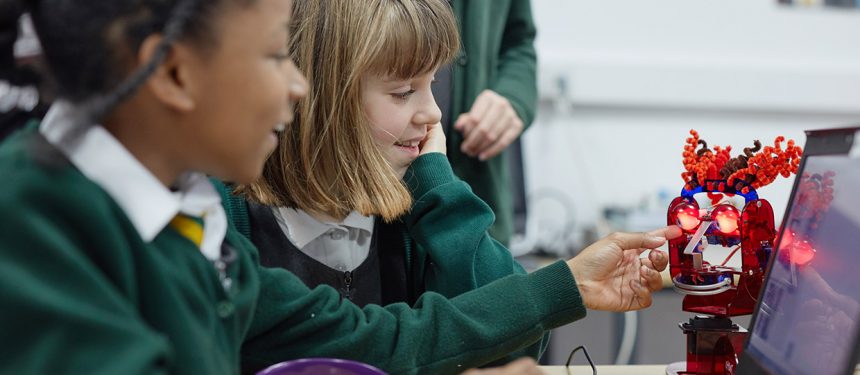Robots are crossing borders in a bid to teach children aged seven and upwards the importance of technology and how it can be used to solve problems.
News and business analysis for Professionals in International Education
Have some pie!
Robots cross borders to teach technology as edtech booms
 "It’s absolutely critical that children develop an understanding of digital devices", according to Ohbot's creators. Photo: Ohbot
"It’s absolutely critical that children develop an understanding of digital devices", according to Ohbot's creators. Photo: Ohbot An edtech company hailing from the British west country, with the help of the UK Department for International Trade, has secured contracts in the US, Australia and Canada to provide robots for use in the classroom.
Ohbot, based in Stroud, Gloucestershire, produces robots aiming to teach children coding and an understanding of algorithms and digital devices.
Its newest contracts will supply Microsoft’s 80 stores across the US and Canada, which the US technology company hopes to use at its YouthSpark summer camps.
“The UK is home to more than a quarter of Europe’s edtech businesses”
The UK DIT has supported the business by identifying key target markets where demand for edtech is growing and introduced the business to potential buyers.
“It’s absolutely critical that children develop an understanding of digital devices and how they can be programmed to do useful things,” Dan Warner, co-founder of Ohbot said.
“That involves not just coding but an understanding of algorithms and how they can be developed, understanding how digital devices work and made to do useful things.”
According to Warner, over the last six to eight months the proportion of all sales going overseas has increased dramatically. Almost 50% of sales now go overseas.
This is largely thanks to the support and advice from the DIT, Warner explained.
“DIT did a review looking at where governments were focusing on development of computer science and the teaching of programming at the primary level,” he said. Countries where governments are investing in education were also identified as potential markets.
DIT provided financial support to help Ohbot exhibit at global shows including Bett in London and SXSW in Texas. It has also assisted the company to meet with Microsoft representatives from the US.
Ohbot has also signed a deal with an Australian distributor to supply schools in the country with its products.
The company’s other co-founder, Mat Walker, said that working with DIT was key to the company’s international success.
In a statement, Paul Shand, DIT’s head for the south west of the UK, said the global edtech market is fast-growing, and the UK can expect to be at the forefront of that growth.
“By 2020, the global market for the sector is expected to total £129 billion and it’s great to see local, startup businesses like Ohbot tapping into this demand and creating new jobs as a result,” Shand explained.
“The UK is leading the way in educational technology and is home to more than a quarter of Europe’s edtech businesses,” he added
“It seems to have an appeal and is something people can relate to”
Warner admits the product’s international success has been surprising.
“We never set out to create a product that would sell all over the world,” he said.
It has been supplied to over 30 countries, including Turkey, Singapore, the Czech Republic and Romania. The range of languages the Ohbot speaks is determined by the voices available for Windows’ system.
Brexit may lead to selling to the European Union more complex, Warner added, where the company has already had success in Dutch, Spanish and French markets.
Speaking with The PIE News in May, Kate Raynes-Goldie, founder of Future Human Academy in Australia warned that children were spending so much time on screens, they didn’t know how to play anymore.
This product offers a way to be creative and play by using technology, its creators claim.
“It seems to have an appeal and is something people can relate to,” Warner said.
“The product itself seems to go across language barriers and political boundaries and so on. Ultimately, we see it as a creative tool. It does what children program it to do.”
Still looking? Find by category:


